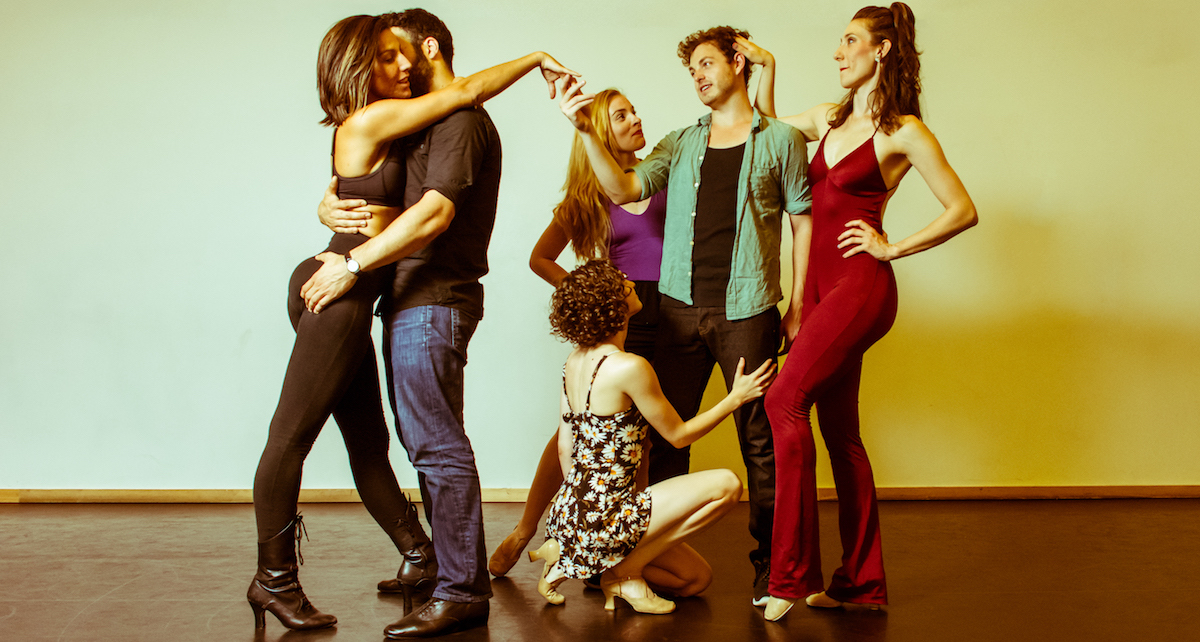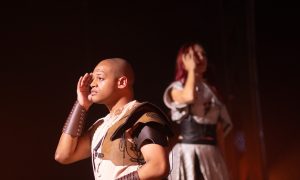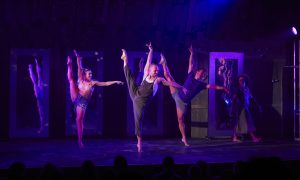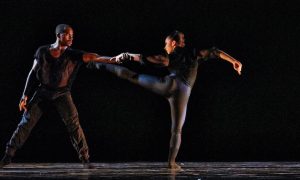Elektra Theatre, New York, NY.
Tuesday, July 19, 2016.
The latest trend on the dance scene? Interactive performance pieces. With hit shows like Sleep No More and Queen of the Night igniting an excited commotion throughout New York City, it’s no wonder that many more choreographers are also exploring a connection beyond the fourth wall. No longer is dance merely performed on a sectioned-off stage, creating an “us versus them” division between dancers and the audience. Now, everyone is a part of the show.
This summer’s go-to dance immersion? Ephemera. The word itself is seductive to the tongue and seems to linger both in speech and written on the page. “Ephemera” is defined as moments or things of fleeting importance or usefulness. The reprised production (originally performed last fall) was conceived and choreographed by Avital Asuleen and composed by Frederick Alden Terry. In their words, “Ephemera is a dance-theater experience that explores themes of love, relationships, passion and lust through the eyes of young New Yorkers out on the town.”
Climb three flights of stairs to the Firefly Lounge of the Elektra Theatre on the corner of 43rd Street and 8th Avenue. The burlesque-y bar is dimly lit with deep red curtains and an ornate metal ceiling. The center of the lounge is empty while bar tables and love seats surround the room. Order your complimentary signature Ephemera cocktail and wrap a strand of red Mardi Gras beads around your neck to let the performers know you want to participate (or leave off your beads and enjoy the show as an invisible voyeur).
Without any formal speech or announcement to “Please silence your cell phones”, the lights flicker down and refocus on the center stage space. Seven dancers (five women and two men) perform sporadically throughout the hour-long show and mix and mingle with the audience through dance and dialogue. Each dancer moves and interacts based on his or her designated personality trait: Cougar, Silly, Juvenile, Waif, Raunchy, Fancy and Leading Man. The performers aren’t necessarily individual characters, but rather archetypes of New York’s contemporary night scene. The sequence of scenes in the bar represents the ephemera of a night out in New York City: drinking, dancing, flirting, fighting and forgetting.
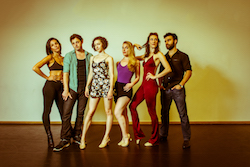
Performers of ‘Ephemera’. Photo courtesy of ‘Ephemera’.
Asuleen’s choreography is accompanied throughout the night by Terry’s music. While the two original art forms seemed to work together, the strong electronic score sometimes took me out of the show’s contemporary New York world and back to the 1980s. But whether a tango, a soft shoe, a ballet, or a free-for-all dance party, the choreography and music illustrated different kinds of love: the playful, passionate, innocent, violent, curious and even self-love.
Two standout scenes exemplified Asuleen’s choreographic creativity and storytelling. The first was a tango-inspired duet between “Cougar” Kimber Benedit and “Leading Man” Nicky Romaniello. As the two strong personalities seemed to fall in “lust”, the movement vocabulary repeated the use of sharp planes and quick angles of the lower body, upper back and limbs. The pair often danced facing each other, with a push-pull infectious energy. Their zeal and aggression grew throughout the scene, and the flirtatious duel ended with a passionate kiss.
“Waif” Anna Terese Stone and “Juvenile” Chris Jehnert performed a contrasting scene upon catching eyes with one another at the bar: an innocent balletic duet. The couple danced side by side, eyeing each other with demure smiles. Unlike the sharp shapes of the previous duet, these movements were fluid, circular and filled with breath. A lighthearted soft-shoe added to the playfulness of the scene. Without any formal dialogue or lyrics to accompany the score, the choreography helped the audience follow the storyline (or, rather, storylines).
While the show was innovative and entertaining, I must admit that interactive performances frustrate me…in a good way. As an audience member, I have become so accustomed to sitting back in the mezzanine and viewing a full performance on the stage up front — almost like watching it on a screen. Shows like Ephemera not only break down the fourth wall between artist and audience, but they also facilitate each audience member to have an entirely individual, beautiful, involved theatre experience. With Ephemera performed in the round with dancers weaving in and out of tables, my physical view of the show was completely different from anyone else’s seat in the room. I was both jealous and curious of what other patrons experienced. What did that dancer whisper to the man sitting in the love seat? How did that partnering lift look from the other side of the space? Was I getting the “full story” since I was seeing something different from everyone else?
I encourage dancers, choreographers, teachers and general theatergoers alike to attend an interactive performance piece. It’s much more than a show with audience participation. You will be shaken from your normal, bystander seat up in the mezzanine, encouraged to have your own experience, and challenged to rethink traditional theatre norms that we’ve taken for granted. Ephemera may examine fleeting moments and experiences, but the impact of the production is anything but ephemeral.
Visit www.ephemeranyc.com for more information.
By Mary Callahan of Dance Informa.
Photo (top): Performers in ‘Ephemera’. Photo courtesy of ‘Ephemera’.


